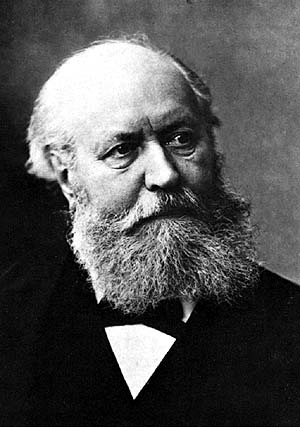Charles Gounod
(1818-1893)
 Charles-François Gounod was a French composer. Born in Paris to an artistically gifted family, his pianist mother became his first piano teacher and he showed much promise from an early age. He enrolled in the Paris Conservatoire, and studied under Fromental Halevy and Pierre Zimmermann (who would eventually become his father-in-law, after he married his daughter Anne).
Charles-François Gounod was a French composer. Born in Paris to an artistically gifted family, his pianist mother became his first piano teacher and he showed much promise from an early age. He enrolled in the Paris Conservatoire, and studied under Fromental Halevy and Pierre Zimmermann (who would eventually become his father-in-law, after he married his daughter Anne).
He won the prestigious Prix de Rome in 1839 for his cantata Fernand. His father, who passed away in 1823, had won the Prix de Rome in 1783 (the second year the award was in existence) for one of his paintings.
Gounod stayed in Italy for four years, where he studied many sacred works of the 16th-century, a period of musical history he favored greatly. Though he gave serious thought to becoming a priest and taking holy orders, he eventually decided against it and resumed a career in composition. He gained popularity with the 1854 completion of his St. Cecilia Mass, first performed on Saint Cecilia’s Day, November 22, 1855. That same year, he wrote his Symphony No. 1 in D Major, which would become the inspiration for a symphonic composition by his 17-year old pupil, a young Georges Bizet.
One of Gounod’s most widely recognized pieces is his setting of Ave Maria and the origin of the composition is unique: He became fascinated with the keyboard music of JS Bach, after being introduced to it by Felix Mendelssohn’s sister, Fanny. He regarded The Well-Tempered Clavier as the quintessential manual of musical composition, and superimposed one of his own melodies onto the C Major Prelude (BWV 846). In 1859, after the deaths of both Mendelssohn siblings, Gounod fit the words of Ave Maria around the melody, and the rest (as they say) is history.
His operatic successes did not come until Faust in 1859, though his ventures into opera began around 1850. While it was not an immediate success, it remains one of the most commonly-performed operas to date and is easily his best-known operatic work. Other operas have received moderate popularity, while a handful escaped into complete obscurity.
While living in England between 1870-1874, he became the first conductor of what is now known as the Royal Choral Society. The majority of his compositional output during these years was vocal, though the now-infamous Funeral March of a Marionette was written in 1872. (Although it received mild popularity after its premiere, the work didn’t gain extreme notoriety until it was used as the opening theme for the series Alfred Hitchcock Presents, beginning in 1955).
During the later years of his life, he returned to writing sacred music, and his Pontifical Anthem (1869) became the official national anthem of Vatican City in 1949. A devout Catholic throughout his life, he felt great spiritual inspiration after kneeling on the stone where Joan of Arc knelt during the coronation of Charles VII in France, which resulted in his Messe a la memoire de Jeanne d’Arc in 1887.
After a final revision of his 12 operas, and while revising a requiem written for his grandson, he suffered a stroke in Saint-Cloud, France and passed away from the resulting complications. Notably, Camille Saint-Saens played the organ at his funeral, while Gabriel Faure conducted the orchestra. He is buried at the Cimetiere d’Auteunil in Paris.
Click below to view Charles Gounod titles:
Click Here to see other Featured Composers
t7t3l0uhl8|0010C39D6D07|DetailContent|contenttext|FCAF8D5A-7C13-458C-B71F-2364031EB252